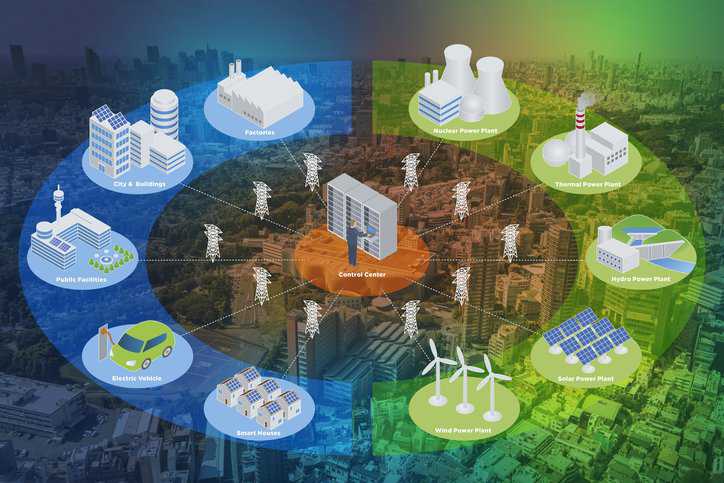ANSI/ASHRAE/NEMA Standard 201-2016(R2020): Facility Smart Grid Model

Nearly all electricity is consumed in a building of some kind: homes, retail establishments, offices, schools, factories, hospitals—the list goes on. ANSI/ASHRAE/NEMA Standard 201-2016(R2020): Facility Smart Grid Information Model captures the breadth and diversity of these consumers by using the term “facility.” It guides the evolution of control technologies used to manage loads and generation sources in homes, commercial and institutional buildings, and industrial or manufacturing operations.
What Is ANSI/ASHRAE/NEMA Standard 201?
ANSI/ASHRAE/NEMA Standard 201-2016(R2020) defines an abstract object-oriented information model to enable appliances and control systems in homes, buildings, and industrial facilities to manage electrical loads and generation sources in response to communication with a “smart” electrical grid. The facility smart grid information model (FSGIM) defined in this American National Standard is also able to communicate information about those electrical loads to utility and other electrical service providers.
What Is a Facility Smart Grid Information Model (FSGIM)?
A facility smart grid information model (FSGIM) is an abstract information model of what the Smart Grid looks like from the perspective of a facility. Examples of a facility include homes, retail establishments colleges campuses, commercial official buildings, hospitals, and factories (essentially a facility is anything on the customer side of an electric mete).
FSGIM in ANSI/ASHRAE/NEMA Standard 201
The FSGIM models the information that would need to be exchanged within a facility to participate in the Smart Grid. Moreover, the FSGIM detailed in ANSI/ASHRAE/NEMA Standard 201-2016(R2020) provides the basis for common information exchange between control systems and end use devices found in single- and multi-family homes, commercial and institutional buildings, and industrial facilities independent of the communication protocol in use. It provides a common basis for electrical energy consumers to describe, manage, and communicate about electrical energy consumption and forecasts. The model defines a comprehensive set of data objects and actions that support a wide range of energy management applications and electrical service provider interactions including:
- On-site generation
- Demand response
- Electrical storage
- Peak demand management
- Forward power usage estimation
- Load shedding capability estimation
- End load monitoring (sub metering)
- Power quality of service monitoring
- Utilization of historical energy consumption data
- Direct load control
Why Is a FSGIM Needed?
Facilities have traditionally been passive consumers of electricity, meaning that the only data exchanges that occurred between a customer and the grid occurred when the utility did a monthly reading of the customer’s electric meter, the utility sent the customer a bill, or the customer sent the utility a payment. However, this is increasingly changing as facilities are becoming active consumers of the smart grid: an electricity supply network that uses digital communications technology to detect and react to local changes in usage.
As such, facilities need more energy-related information regarding their facilities in order to maximize the benefits of participating in the smart grid. This information can come from the FSGIM that is defined in ANSI/ASHRAE/NEMA Standard 201-2016(R2020).
ANSI/ASHRAE/NEMA Standard 201-2016(R2020): Facility Smart Grid Information Model is available on the ANSI Webstore.






